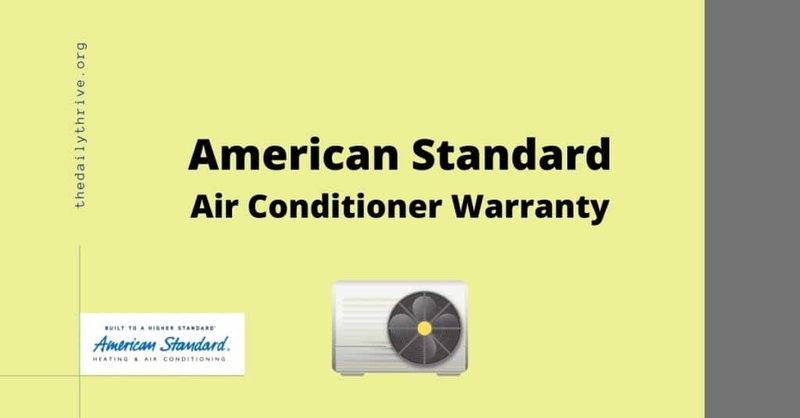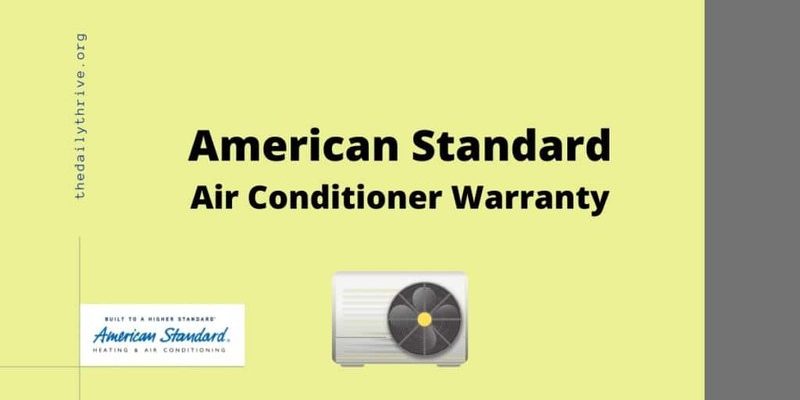
Imagine buying a new American Standard HVAC system and feeling that little spark of relief—like you just bought a solid pair of boots that’ll last through many winters. But then, a question creeps in: how long does the warranty actually cover you if something goes wrong? It’s like wondering how long your umbrella will keep you dry before it springs a leak. Warranties might sound dry or complicated, but they’re really just your safety net for those “oops” moments with your heating and cooling system.
American Standard is a big name in HVAC, known for reliability and innovation. But when it comes to their warranty, not all coverage is created equal. You might be curious about what parts or repairs are covered, how long you have to file a claim, or how the warranty compares to other brands. Let me walk you through the ins and outs of American Standard’s standard warranty—no confusing tech jargon, just clear, straightforward info.
What Does the Standard American Standard HVAC Warranty Cover?
Here’s the thing: American Standard offers different warranties depending on the part of the HVAC system and model you have. The “standard warranty” usually refers to the basic manufacturer’s protection that comes automatically with your unit. This warranty typically covers defects in materials or workmanship. Think of it as a promise that your new system won’t fall apart just because of a factory slip-up.
To be more specific, the main components like the compressor, heat exchanger, and cabinet often have varying warranty lengths. For example, the compressor—kind of the heart of your AC unit—usually carries a longer warranty than some smaller parts. So if it fails early on due to a manufacturing defect, you’re not left footing the entire repair bill.
But warranties don’t usually cover everything. Normal wear and tear, damage from poor installation, or lack of maintenance are typically out of scope. That means if your system breaks because you forgot to change filters or didn’t have it serviced regularly, you might not be covered. It’s like a car warranty—you have to take care of your ride for the warranty to stay valid.
Duration of the Standard Warranty: What to Expect
So, how long is the standard warranty for American Standard HVAC systems? In most cases, you’re looking at a **10-year limited warranty** on the compressor and parts for residential units. That’s actually pretty generous compared to some other brands, where you might only get 5 years. But here’s the catch: the warranty is often *conditional*.
What does “limited” mean? It means the warranty covers specific parts under certain conditions, and you usually need to register your product within a certain time frame after purchase — often 60 days. Skipping that step could shorten or void your warranty. So, if you think you’ll forget to register, maybe set a reminder right after installation.
Also, the length of warranty might vary depending on the system type. For example, the heat exchanger in a furnace might have a different coverage period than the outdoor unit in your air conditioning system. It’s always a good idea to check the exact warranty booklet or documentation for your specific model to know for sure.
How to Register Your American Standard HVAC System Warranty
Honestly, registering your warranty is one of those small tasks that can save you a lot of headaches later. American Standard generally requires you to fill out a warranty registration either online or via mail within 60 days of installation. That’s like signing up for a gym membership: you’ve got it, but you have to activate it to take full advantage.
Here’s how you can register your system:
- Locate your model and serial numbers. These are usually on a label somewhere on your HVAC unit.
- Visit the American Standard warranty registration website. Or, if you got a paper form from your installer, you can mail it in.
- Fill in your personal details, purchase date, and installation information. Make sure everything matches your purchase receipts.
- Submit the form and keep a copy for your records.
By doing this, you make sure the company knows exactly when your warranty starts, and they have your info handy if you need to claim a repair or replacement.
What Happens If Something Goes Wrong During the Warranty Period?
You might be wondering, “Okay, the warranty lasts 10 years—but what do I do if the compressor fails in year 4?” Here’s the thing: once you notice a problem, the easiest first step is to contact either your HVAC installer or American Standard customer service. They’ll guide you through troubleshooting steps, which might include resetting equipment or checking your system’s remote controls or thermostats to make sure everything is syncing properly.
If the issue is indeed a factory defect and your warranty is registered and valid, the repair or replacement of the faulty part is generally covered at no cost to you, aside from possible labor fees depending on your installer’s terms. Some parts might get replaced outright, while others are repaired, depending on availability and the nature of the issue.
Keep in mind, documenting every service visit or repair attempt is helpful. It’s like keeping a journal of your HVAC’s health. When you call later, you can provide a clear history, making the warranty claim smoother and quicker.
Comparing American Standard’s Warranty to Other HVAC Brands
Let me explain why American Standard’s warranty stands out a bit. While many brands offer limited warranties ranging from 5 to 10 years, American Standard usually provides a solid 10-year limited warranty on key components, which is pretty competitive.
For example, some other big names might only cover compressors for 5 years or offer shorter parts warranty periods. Plus, American Standard’s warranty is often paired with good customer support and an extensive network of authorized technicians. This can make a big difference if you ever need troubleshooting help or to sync your thermostat and HVAC system properly.
On the flip side, you might find generic or universal HVAC systems or remotes that don’t come with as comprehensive a warranty. It’s a bit like buying off-brand batteries for your remote: they might work fine for a while, but you can’t always count on backup or replacement. So, going with a reputable brand like American Standard often means better peace of mind.
Important Tips to Keep Your American Standard Warranty Valid
Here’s a quick checklist to keep your warranty safe and sound:
- Register your warranty promptly. Don’t let those 60 days slip by.
- Schedule regular maintenance. Most warranties require annual professional tune-ups to stay valid.
- Follow operating instructions. For example, using the right thermostat, changing batteries in remotes, and syncing devices correctly helps avoid unnecessary damage.
- Keep all service records and receipts. This paperwork can be your lifeline if a warranty claim arises.
- Avoid DIY repair attempts. Fixing the system yourself without proper authorization can void the warranty.
Think of your warranty as a delicate plant—you have to water it regularly (maintenance), protect it from harm (proper use), and give it attention (registration and records) to keep it thriving.
Wrapping It Up: Why Knowing Your Warranty Matters
Honestly, understanding exactly how long the standard warranty for American Standard HVAC systems lasts and what it covers can save you a lot of stress down the road. It’s not just about the number of years—though 10 years is a nice, reassuring chunk of time. It’s about knowing how to protect your investment and what steps to take if the system hiccups. You wouldn’t want to be stuck wondering if a repair is out of pocket or not.
And if you’re ever confused by warranty terms, remote syncing, or troubleshooting a strange HVAC issue, remember that the warranty is there to help you navigate those bumps. When you combine a solid warranty with proper care and professional support, your American Standard HVAC system is more likely to keep you comfortable without surprises.
